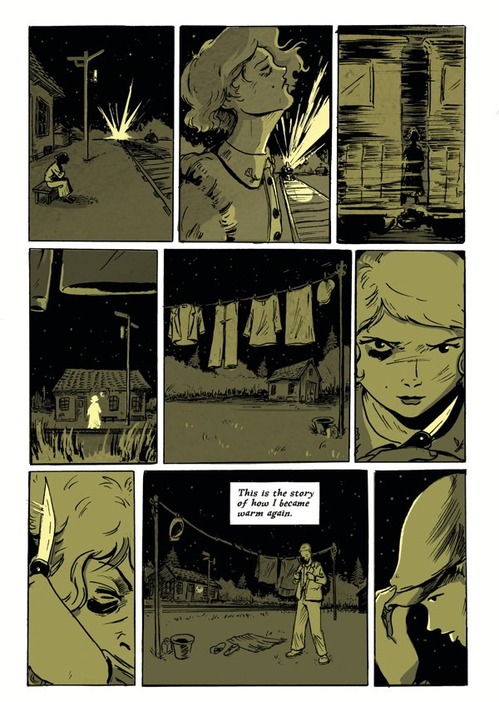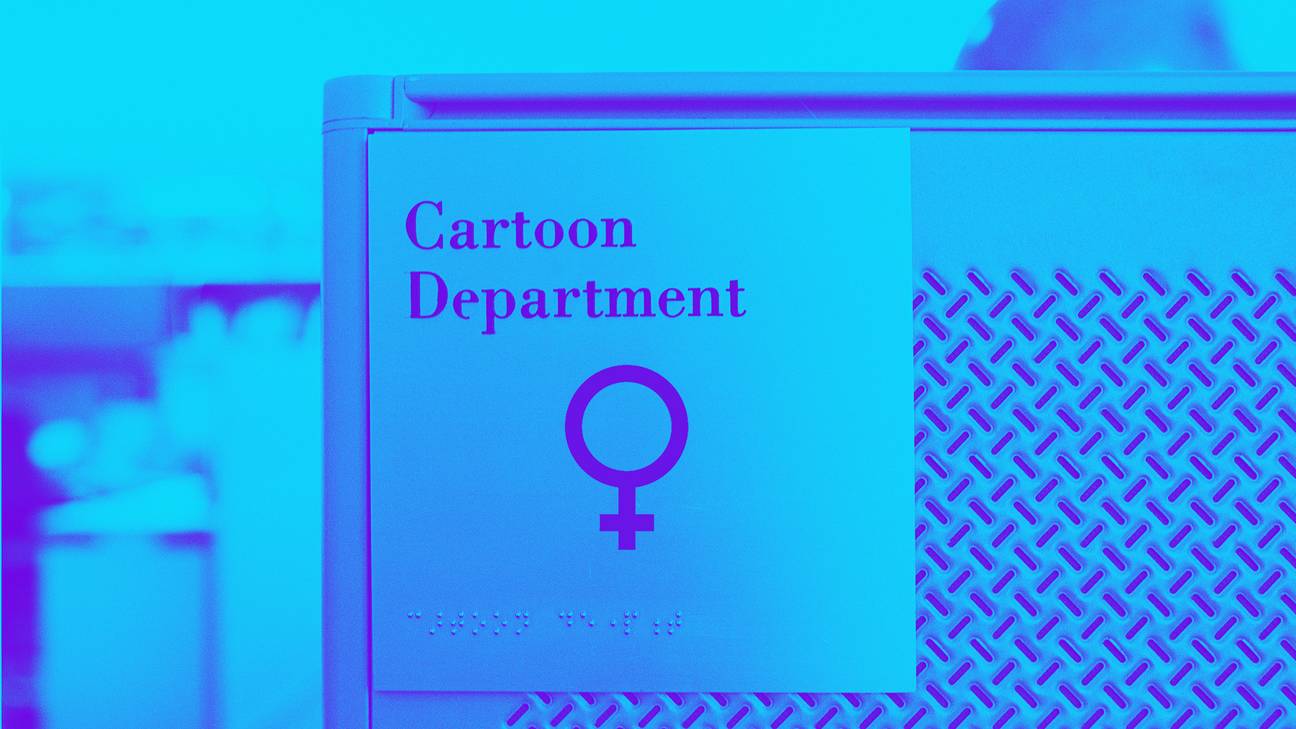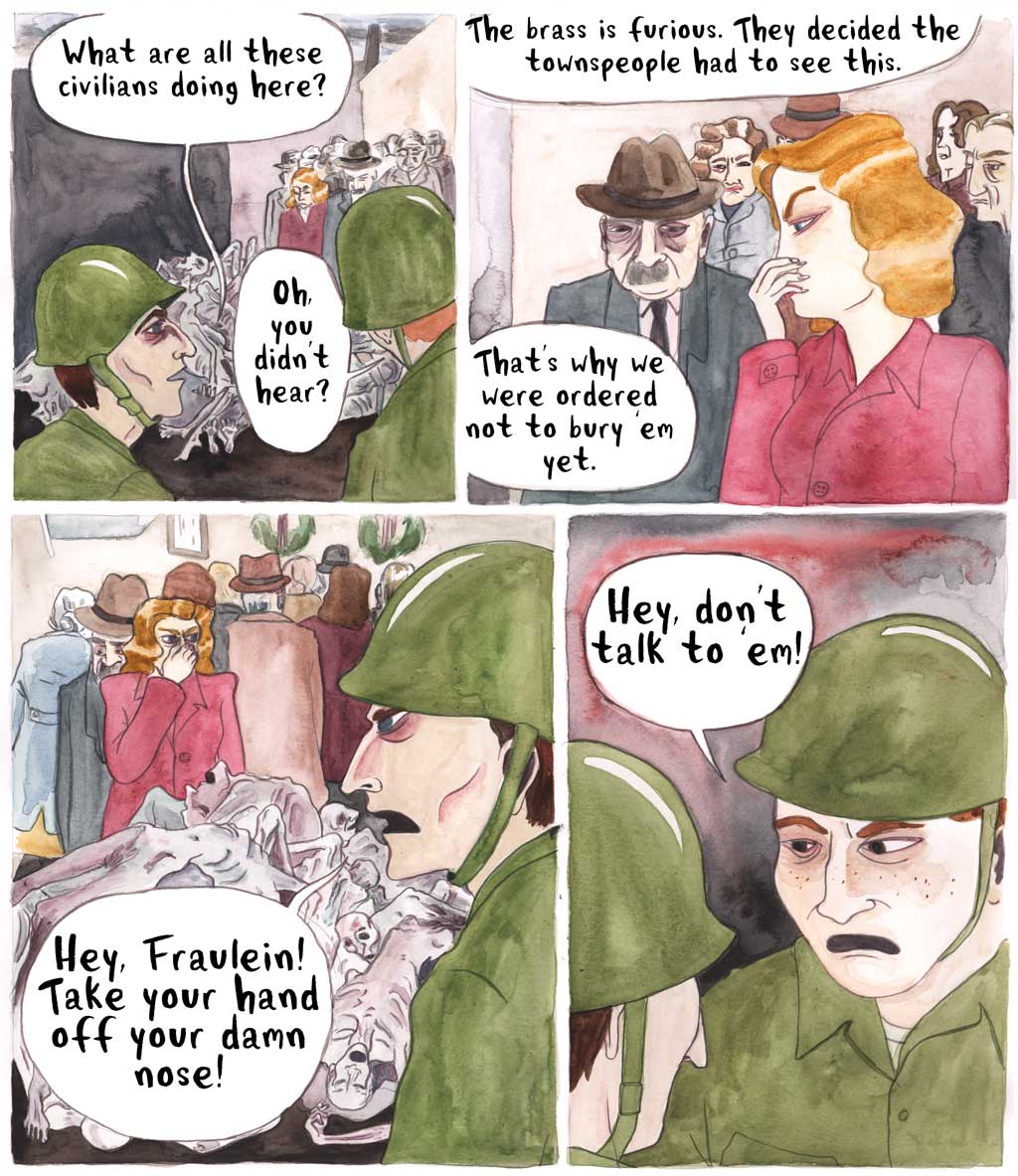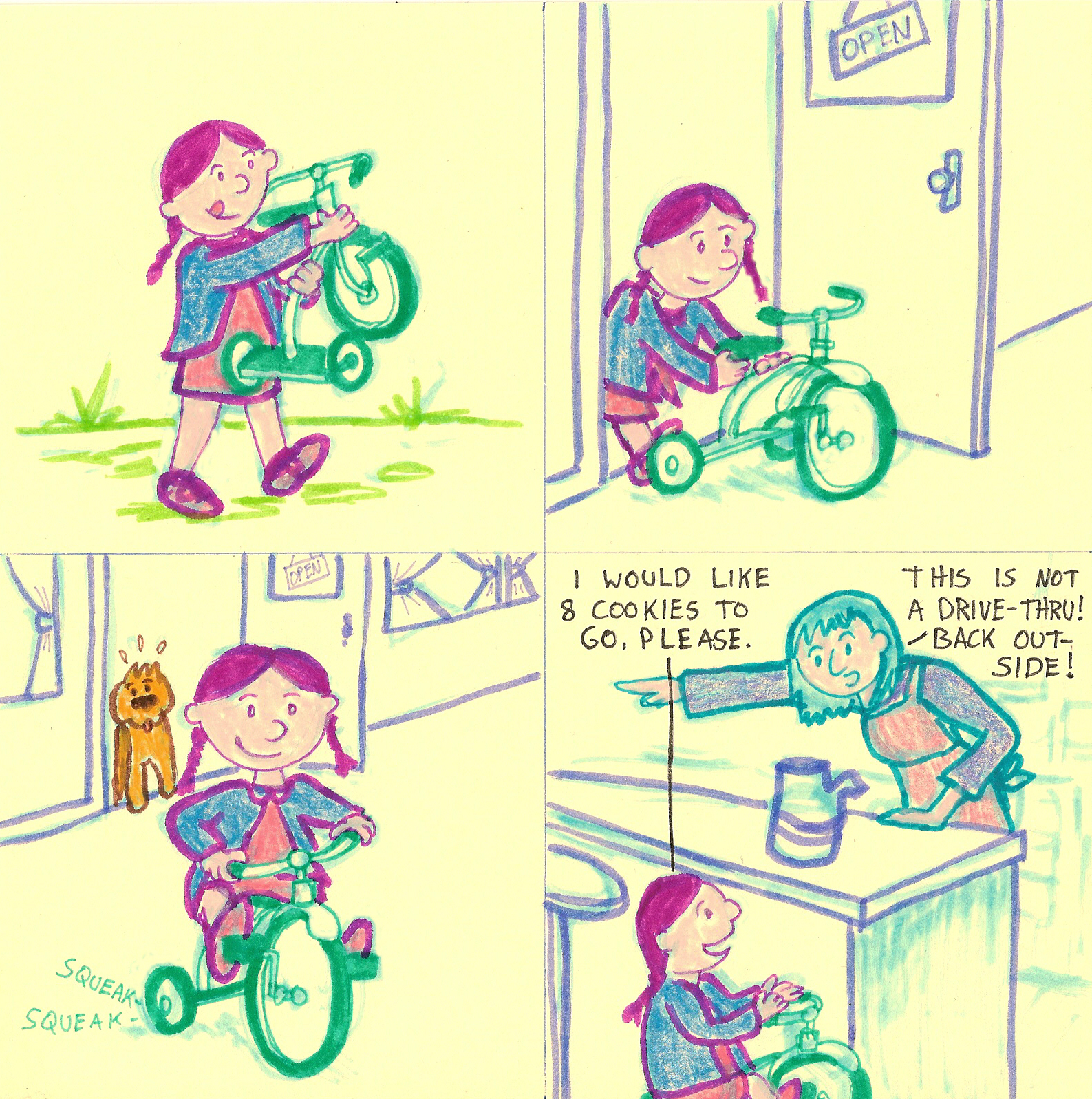Sally here with the PEN World Voices Festival lineup, a look at female cartoonists in mainstream publications, new work from Cecil Castellucci and Leela Corman, and more.
—————————————————————————————————
The PEN World Voices Festival is coming up! Meg Lemke (editor in chief of Mutha Magazine, chair of the Comics and Graphic Novel Committee for the Brooklyn Book Festival, and guest editor of PEN America’s Illustrated PEN series) is making sure that comics are well represented throughout the festival (see poster above!), and female creators especially are being given plenty of space to make some noise. From Rokudenashiko, to Roz Chaste, to Julia Gfrorer, to Gabrielle Bell, female cartoonists from all corners of the comics community are getting together to talk shop and share their work and their opinions. Please make an effort to get to these events and support all of the cartoonists and artists who will be lifting their voices during the festival.
—————————————————————————————————
Hazel Cills wrote a detailed report for MTV News on the current place of female cartoonists in mainstream publications. It’s a good moment to take notes, as it was announced recently that Bob Mankoff, the cartoon editor for The New Yorker, would be stepping down after 20 years in the role. Emma Allen will be picking up the reins in a few weeks (while maintaining her role as an editor for the magazine’s Daily Shouts section) and it goes without saying that she’s interested in hiring more female cartoonists. The New Yorker, along with other mainstream publications (especially in their print form), is a “notoriously hard place to submit cartoons” at the best of times, and despite the efforts of editors and staff here and there, comparatively few women succeed in getting their work published with any regularity.
“Female illustrators make less money than their male counterparts on average and still have a long way to go when it comes to winning awards. The first Herblock Prize for editorial cartooning that was given to a woman went to Jen Sorensen in 2014, but just last year the prestigious comic artist award Angoulême Grand Prix nominated 30 men and zero women (which caused many male cartoonists, including Daniel Clowes and Chris Ware, to ask to be removed from the list). So while publications are seeking to diversify the bylines of writers and artists, when it comes to the artwork and cartoons published alongside them, the conversation is just getting started.“
The article serves as both a look at the current state of things, and a brief crash-course in the history of female cartoonists (and the wall of white males that they’ve been beating against for a century and more). It brings up an interesting note too about the “self-censoring” that women and POC creators apply to their work, knowing that white male characters are more likely to grab the attention of white male editors.
” “As women we tend to self-censor a lot more,” illustrator and Maryland Institute College of Art professor Shreyas R Krishnan says. “Whether it’s OK to put something in the work or not purely because it doesn’t conform to the default that’s been established.” Krishnan describes working, as an Indian woman, on a commissioned illustration of a female musician of color for white, male art directors. “I tend to abstract skin color, using blue or purple, so that’s what I did,” she says. “But then the art director was like, ‘No, we need her to look like what she looks like,’ and I was like [laughs], ‘Sure, I can do that, I just wasn’t sure if you guys would want it that way.’ I was assuming they might not because they were white men.” “
There are many more interesting viewpoints and thoughts in the article – read the whole thing HERE.
—————————————————————————————————

Although she is still working on Shade, the Changing Girl, Cecil Castellucci has another comics writing project coming from Dark Horse very soon. Soupy Leaves Home is “a Depression-era hobo odyssey about a young girl fleeing her stifling home to live life free on the rails under the mentorship of an elder vagabond who sees the world a little bit differently than most.” It’s a story that Cecil has been thinking about and working on since 2008. Paste Magazine sat down with her recently to talk about the comic.
“Paste: Pearl’s dad isn’t her only obstacle—even other women in her life try to force her into the role of a dutiful daughter. Was it important to you to address gender inequality of the era in addition to Pearl’s specific familial situation? And did your research lead you to any real-world tales of women hoboes living undercover as men?
Castellucci: Absolutely it was important. Her family was, as were many others, still reeling from the Great Depression. That definitely plays a part in the dynamic that is going on there, which you can see on page one. Pinched times affect people and how and what they try to hold on to. I think for Soupy’s family, gender dynamics and the idea of being proper and what is proper is what they cling to. You have to remember in 1932 a bobbed haircut was considered scandalous. Pants on women were still kind of weird. [White] women had only gotten the vote a decade earlier. Bennington College, while not the first women’s college, opened its doors that year. Soupy saw herself as a different kind of woman than what her family saw. She thinks of herself as becoming a modern woman, and while the idea about what that meant was emerging, it was still a very difficult road for a girl. Frankly, it still is. And while there was no particular girl or woman hobo that I can point to in my research, every book and documentary and fictional film about hoboes includes girls and women who rode the rails. They oftentimes traveled as boys, not only for safety reasons but for the freedom and ease it granted them.“
Read the rest of the interview HERE – look for the comic on shelves soon.
—————————————————————————————————
There is an excerpt from Leela Corman‘s graphic novel-in-progress – Victory Parade – on Tablet Magazine. The story is about a Jewish American soldier named Sam Arensberg who helps “liberate a concentration camp – but the horrors he witnesses haunt his dreams“. See the excerpt HERE.
—————————————————————————————————
Shoots and Leaves
- Sarah Glidden’s Rolling Blackouts: Dispatches from Turkey, Syria and Iraq has won the 2017 Lynd Ward Prize for Graphic Novel of the Year. Read more about it on The Comics Beat.
- Annie Mok speaks to Gabrielle Bell about Everything is Flammable – on The Comics Journal.
- AIGA Eye on Design has a review of Eleanor Davis‘ upcoming comic You & A Bike & A Road – read it HERE.
- Illustrated PEN has an excerpt from Mira Jacob‘s Questions From My Mixed-Race Son – guest editor Meg Lemke introduces it HERE.
- The Chicago Tribune has a review of Kristen Radtke‘s debut graphic memoir Imagine Wanting Only This.
—————————————————————————————————
Blinkers – 4-21-2017 – by Jack Brougham
—————————————————————————————————
Suzy and Cecil – 4-21-2017 – by Sally Ingraham
—————————————————————————————————
Joanie and Jordie – 4-21-2017 – by Caleb Orecchio





